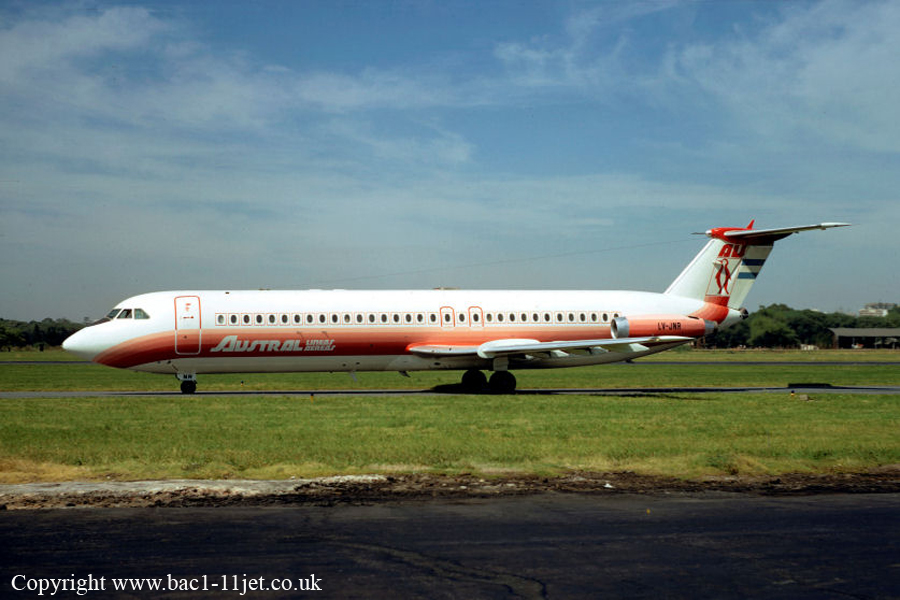Crash of a BAc 111-521FH in Bahía Blanca
Date & Time:
Dec 4, 1973 at 1540 LT
Registration:
LV-JNR
Survivors:
Yes
Schedule:
Buenos Aires – Bahía Blanca – Trelew
MSN:
192
YOM:
1969
Crew on board:
6
Crew fatalities:
Pax on board:
68
Pax fatalities:
Other fatalities:
Total fatalities:
0
Circumstances:
Just after liftoff, while in initial climb, the crew noticed a loss of power on the left engine. The captain decided to land back but the remaining distance was 950 meters only. Unable to stop in time, the airplane struck arresting cables installed for the Douglas A4Q Skyhawk of the Argentinian Navy. Impact caused severe damages to both wings and the airplane came to rest in flames as the fuel tanks were punctured. All 74 occupants were evacuated safely while the aircraft was damaged beyond repair.
Probable cause:
Aborted take-off due to apparent loss of power. This was caused by the aircraft having touched down on the runway again, after initial lift-off, whilst the crew were distracted by a bird of considerable size which was flying past the left hand windscreen. Wrong decision on part of the crew as the takeoff procedure was already completed.











